 Sunny day looking towards Vashon Island, Wa. Sunny day looking towards Vashon Island, Wa. Over the past year, I have really begun to focus on the importance of being present and appreciative of the beauty that surrounds me at all times. This beauty can come in many different shapes, sizes and overall forms and is not always a static object. It can include the morning sunshine as it just starts to peek-up for the first time today. Or, the presence of a stranger who you strike up a conversation with while waiting for a bus or in line at the market. These special moments, feelings and experiences can be so powerful that just one of them can make your entire day or even week. Although these moments are happening constantly and all around us, It takes the willingness to pay the attention that is needed to fully experience and enjoy these moments. Think back to a first date that you have had in the past. You go out to dinner, which is of course the main event of the night. Here, you have hours of deep conversation and later can think back and appreciate that this is largely due to the additional focus or present state of awareness you had when meeting with this new potentially special person in your life. This awareness and focus is often given in new settings, situations or around new people, but can easily become discarded in everyday life. With all of the current distractions and people, businesses, technology etc, fighting for your attention, this can become even more difficult. Our attention continues to become more and more valuable as we have increasingly more options of how to spend our time, or more importantly our focused time = attention. If you are like me at all and find that you are easily distracted by whatever is around you or the next shiny object, you may find staying attentive a very difficult at first. I have however, found some strategies that help even the extremely distractible of people like myself, to stay focused and attentive more easily. Here I will review 3 strategies for for practicing or creating more focused time or attention throughout your day. Strategy #1 Avoiding the “Multitasking” Myth and Limiting Inputs. Although some people are completely convinced that they are great multi-taskers, there is some interesting research that suggests what’s actually happening is rather quick task-switching. The problem with this, is we lose focus, momentum, train of thought and simply just time by switching tasks. If we can therefore, focus on one specific tasks until that task is complete or a specific amount of time has expired. For this, I like the Pomodoro Technique. This is simply breaking up work tasks into 25 minute chunks where you focus on 1 task only, followed by a 5 minute “active” break. During this “active” break, the goal is to move your body physically around through space. This can be standing, stretching, walking in place, push ups, squats, or anything else that gets your body moving for 5 minutes. Also, this is a good time to limited inputs including distractions like, text messages, email, Facebook, social media, or anything else that pulls you away from the 1 task at hand. Strategy #2 "Work Harder On Yourself Than You Do On Your Job." -Jim Rohn Over the years, I have learned many things about myself including the fact that I am inherently lazy, and will come up with any excuse possible to avoid the tasks that help me to improve but require some discipline, like exercise. So, after experimenting with differing approaches for improving my consistency, I have found that making time for the activities such as, exercise, journaling, reading and meditation is great in theory but not as easy in practice. That is, unless I make time for and schedule these in, they will not happen. So, for me, these all important tasks that are meant to improve myself MUST happen before I do anything else especially work. That way, once I come home from work, I have already accomplished all of the things that I wanted to for that day which will bring me one step closer to each of my goals in self improvement. This Morning Routine has taken me some time to get used to, but has been one of the best improvements I have made over the past few years. I have shifted my wake and sleep times to accommodate this new schedule, which for me has my day start at 5am and end at 9pm. Strategy #3 Practice Mindfulness, Meditation or Just Being Present Being present and attentive to what is going on right now is such an important skill that it is worth practicing to improve upon. This seems obvious, but for me was not something that I regularly spent time doing. I just thought that I could turn on my attention at will and let it go when whatever I was doing seemed boring or uninteresting. So, after hearing person after person talk about improved present state awareness and reduced anxiety from practicing being present, mindfulness, meditation, etc, I decided to give it a try. I have been using an app called Headspace for a couple months now which is a short guided meditation done most days of the week. I currently do 15 minute sessions once per day and continue to be amazed at the benefits I feel. This includes reduced anxiousness, improved present state awareness and has given me a tool for being more aware of thoughts and emotions as transient, which reduces any negative affects associated with these. I am still new to this but am excited to continue to learn more and continue to grow with this practice. Now, everyone is different in what they want out of life and what constitutes as a successful day. Therefore, it may take a different approach or focus to get to the goals that you have laid out for yourself. As for me, using the 3 above mentioned strategies, I have been able to massively increase the number of successful days for myself and taken leaps forward to my person life goals. I hope that you find some of these strategies and information useful in your own journey! P.S. I would love to hear if you do any of the strategies I have listed or if you have found your own that work good for you!
0 Comments
 Some tempting sugar laden junk food. Some tempting sugar laden junk food. Positive and Negative Effects I've Noticed So Far It is always interesting to see what personal experience can show you as you adapt to a new diet or dietary adjustment. Also, how much this can differ from one person to the next and how you can find a system that will work for you. Therefore, these are not necessarily what you will experience if you were to eat the same way as I have. Even with my girlfriend and, I whom I live with and share most of my meals with, has had some experiences that are slightly different than myself. Positive -During the first week of adding Bulletproof high fat coffee to my breakfast, I soon become too full to have coffee and breakfast food, and have since done the high fat coffee or tea only. -I started loosing my craving for additional caffeine in the late morning or after lunch throughout the first 1-2 weeks. I used to drink 2-4 cups of coffee throughout the day. -I have more steady energy throughout the day and don’t feel a crash after lunch. -I am more in-tune with my hunger or often times lack of hunger, and don’t feel like I HAVE to eat all the time or even at typical “meal times”. -I can skip an occasional lunch without any feeling of irritation and often times without even any hunger pains. -I stay full longer from meals and therefore rarely ever snack. -I only have to eat 2 times per day, since I have bulletproof coffee or tea in the morning and have 2 larger meals for lunch and dinner. I usually don't get hungry until lunch which saves me time and hassle in the mornings. -I have lost bodyfat, which for me wasn’t the goal but is a great side effect (from about 8%-7%). Negative -I no longer eat the typical comfort foods, for me that was; chocolate chip cookies, pizza, sandwiches, ice cream, donuts, fries and others just to name a few. -It can be more difficult to eat out at restaurants, although I can usually skip the starch and order extra veggies to make a meal, at most places. -During the transition to higher fat, I added too much too quick a few times, which increased my need for bathroom trips, until I figured out the right dose for me and got used to eating this way. -I constantly have to remind myself to not worry about too much fat, but instead focus on not getting too much protein, which I used to think the more the better. -It does take a little more planning and foresight to avoiding getting yourself in a situation where you do not have the food you need. Although, because your body will be getting used to burning fat, you can always skip a meal and probably won’t be too hungry from this surprisingly. Additional Resources and Research Web: Ketogenic-diet-resource.com This is my go to website for easy to understand information regarding the ketogenic diet. Well written and full of great resources, check this site out! CharlieFoundation.org This website has great information and resources for current applications of ketogenic diet for therapy as well as links to research and research studies that are current and/or recruiting. Also, the blog has some great keto recipes. Books: Keto Clarity by Jimmy Moore This is a very in depth look at the Ketogenic diet and has many contributors including multiple MD's researchers and people that have been using the ketogenic diet for years. Eat Fat Get Thin by Dr Mark Hymman This is a well written explanation of why it is so important to get the right nutrients into your body and why lots of good fats is an important piece of this puzzle. Questions or Comments? Leave Me a Note Below! 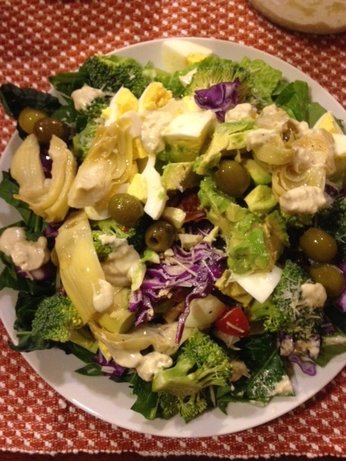 My "salad" which includes kale, spinach, lettuce, avocado, hard boiled egg, tomato, broccoli, cabbage, cheese, green olives, artichoke hearts, and sometimes bacon covered in homemade lemon vinaigrette dressing and MCT oil. My "salad" which includes kale, spinach, lettuce, avocado, hard boiled egg, tomato, broccoli, cabbage, cheese, green olives, artichoke hearts, and sometimes bacon covered in homemade lemon vinaigrette dressing and MCT oil. My Current Regimen And Personal Stats Over the past year of eating this high fat, moderate protein, low carb diet, I have found that certain foods and times of eating tend to work better for me than others. So far, for myself, this is what I have learned. I start out my day with the previously mentioned Bulletproof coffee or tea, which take the place of breakfast for me and allow my body to stay in a "fasting state" until lunch. For me, I drink my coffee/tea around 6am, after completing some morning routine items that includes my morning gut drink. (check out My Morning Routine Here). I will then workout and head to work where I will consume only water until lunch, which I eat at about 1:30pm. I don't snack because I don't get hungry between meals. The morning coffee/tea keeps me full until my lunch. Lunch consists mostly of leftovers from dinner the night before. This can vary, but usually includes a generous portion of “salad” and some small portion of protein and/or some hard cheese. Now, I should point out that when I say “salad”, this includes; kale, spinach, lettuce, avocado, hard boiled egg, tomato, broccoli, cabbage, cheese, green olives, artichoke hearts, and sometimes bacon covered in homemade lemon vinaigrette dressing and MCT oil. This is one of my go-to items and can be a stand alone meal, or with other times. This salad, which you can see covers most of my bases for nutritional needs, and tastes delicious. I will then head back to work until the evening when it is time to come home for dinner, around 7:30pm. This meal can vary a lot, but almost always includes a slightly scaled down version of my salad. Also, some sort of protein, which could be anything from burgers, to meatloaf to “reuben sandwiches”, chicken curry, stuffed chicken, pork shoulder, salmon, halibut, and many more. All of these recipes have been modified and made specifically for this diet, which is an important component of this food selection. One of the biggest differences from how I used to eat compared to how I am eating now is, smaller portions of protein with my meals. This can seem counter to what most people preach and is counter to what I did for a long time. I think it can be an important component of keeping your overall glucose levels down. This is to avoid protein to glucose conversion from having too much protein via gluconeogenesis. This can mean that even a low carb diet can be problematic if you have "too much" protein. 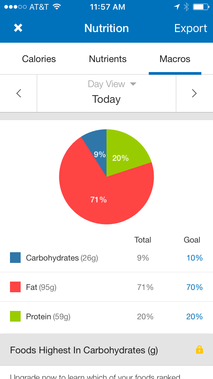 A sample meal macronutrient breakdown on myfitnesspal app. 70% Fat, 20% Protein, 10% Carbohydrates. A sample meal macronutrient breakdown on myfitnesspal app. 70% Fat, 20% Protein, 10% Carbohydrates. The tricky part with this is it seems to be different for everybody regarding how much protein is "too much". This can take some trial and error to figure out exactly how much protein your body needs, but I try to be around 20% of my daily total caloric intake, which tends to be around 100-150 grams of protein for me daily. This has been after lots of trial and error and is not aways perfectly exact. I also don't necessarily hit the same numbers everyday. I also didn't get to these numbers by measuring everything out first, and only eating what I calculated. I simply began by eating the amounts I was hungry for and felt that I needed and after a week or so of this, I would input the data into myfitnesspal which is a free app that will calculate your food intake calories, macronutrients and even micronutrients. After seeing where my numbers where at, based on my eating, I would adjust for usually less protein and more fat which is usually where I faltered. Through this process I learned more about the foods I was eating too, like how nuts can have more carbohydrates than I always thought. Keep in mind also, that I am about 160 lbs and workout most days including Crossfit and other HIIT workouts throughout the week. I have a very sensitive digestive system and am also NOT a competitive athlete. Therefore my nutritional goals, focus, and needs will most likely be different than yours. Make sure to always consult your physician or nutritionist before making any dietary changes. As previously discussed, the macronutrient ration goal of the ketogenic diet is somewhere in the range of 70% Fat, 20% Protein, and 10% Carbohydrates. Now remember, this is the percentage of each macronutrient based on total calories (food intake) NOT percentage of volume of food. Remember, 1 gram of Fat is 9 calories, while 1 gram of Protein and 1 gram of Carbs are both 4 calories each. This means that it doesn't take as much volume of foods that are high in fat as it does for protein or carbs to make up the same number of calories. The way I think of it is that, if my plate is 3/4 vegetables (including avocado, olive oil and/or MCT oil), and the last 1/4 split between protein and fat, I will be good. The vegetables include much needed fiber, which is vary important when eating a high fat diet. The food tastes good and keeps me full, lean and full of energy. I'm not sure what else you could want in a nutrition plan. Stay Tuned for Part 5: Positive and Negative Effects I've Experienced |
Author : Jordan ProudfootHere are my thoughts and insights into fitness and wellness to be the best you possible. Archives
February 2019
Categories
All
|
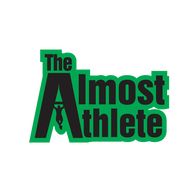

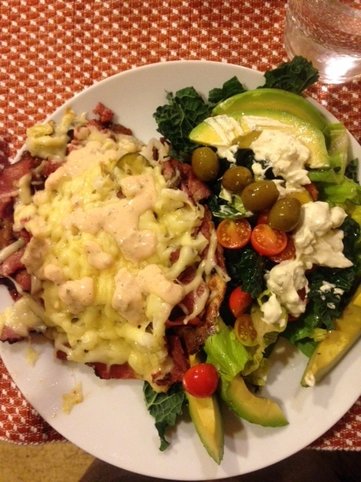
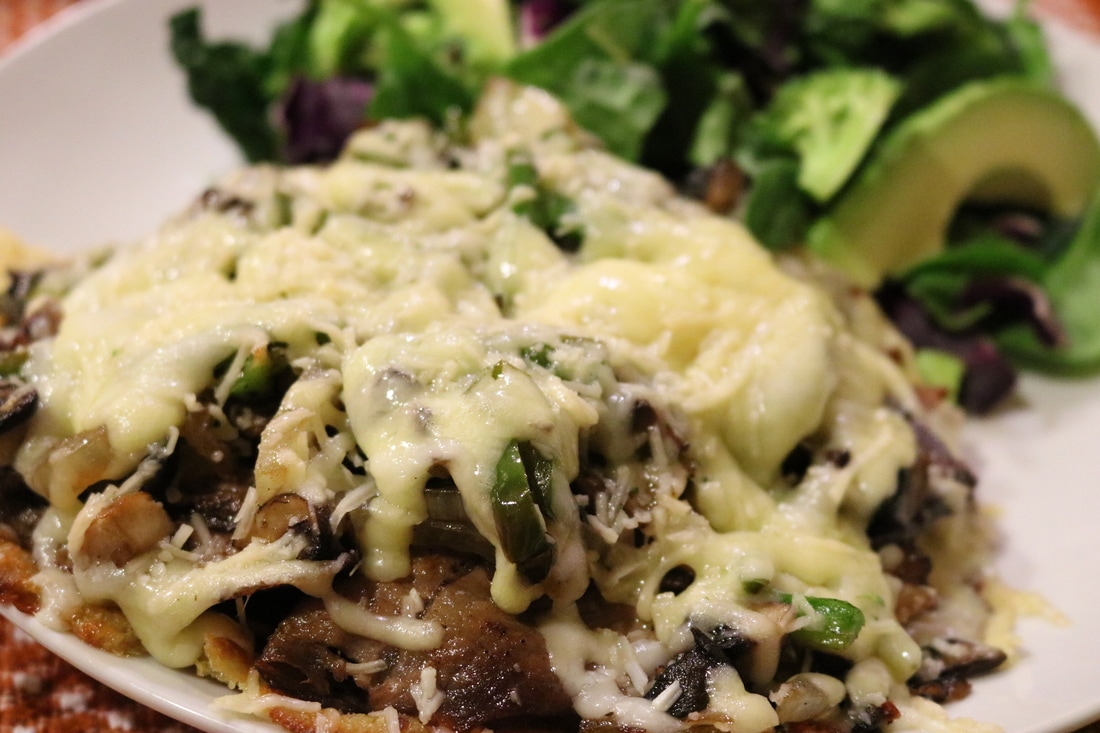
 RSS Feed
RSS Feed
